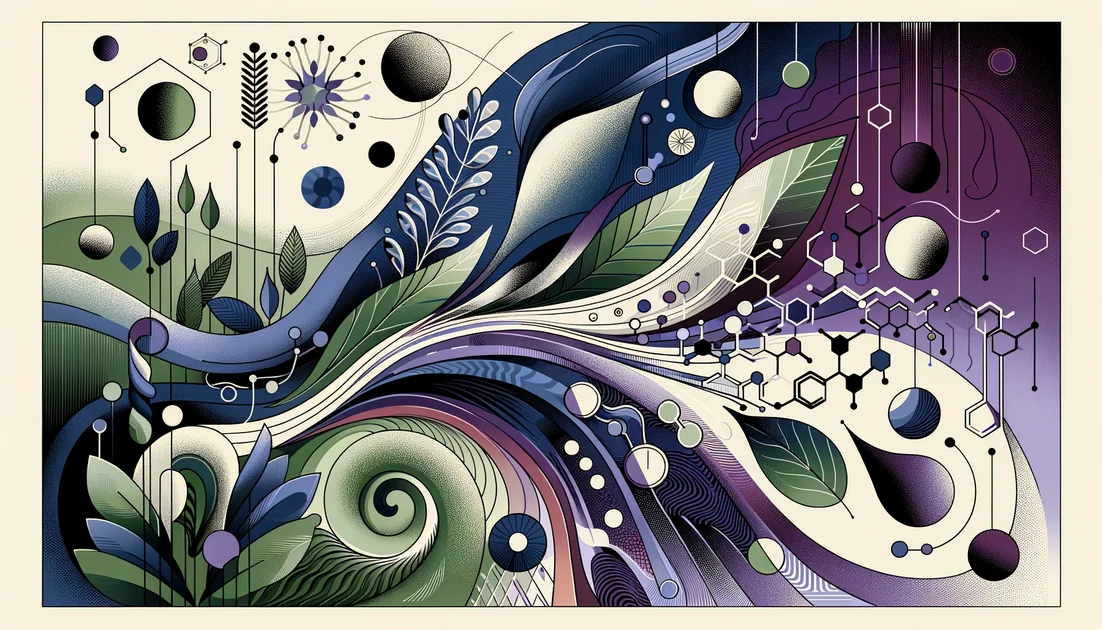
From Kitchen to Cortex: How Lion's Mane Became a Brain Story (and Why the Ending Isn't Written Yet)
Steam rises from a simple mushroom soup—white tassels of Lion's Mane floating like tiny comets. For centuries, cooks praised its texture; healers favored it for the stomach. Today, neuroscientists are chasing a different rumor: can this culinary oddity coax the brain to rebuild its wiring?
- Evidence
- Emerging
- Immediate Effect
- Within hours (speed of performance in one study) → 8–16 weeks
- Wears Off
- About 4 weeks after stopping
A kitchen mushroom steps into the lab
Lion's Mane is an edible, medicinal mushroom now starring in headlines about focus and memory. Early human trials offer glimmers, not guarantees: in 2009, older adults with mild cognitive impairment took Lion's Mane daily for 16 weeks and improved on a cognitive test—only to slip back toward baseline a month after stopping.[1] Another small trial fed cookies laced with Lion's Mane to middle-aged women for four weeks and saw scores for depression and anxious complaints fall compared to baseline.[2] So is it a brain booster? The sober view from the Alzheimer's Drug Discovery Foundation: "Clinical trials testing Lion's mane interventions have included small numbers of participants with short durations of treatment. Well-designed larger and longer clinical trials are needed."[3]
The puzzle piece most people miss
When people say "Lion's Mane," they often mean the fluffy fruiting body you slice and sauté. But researchers also study the mycelium—the underground filament network—because it contains a different family of molecules. In the 1990s and 2000s, Japanese teams reported two cast members: hericenones (primarily in fruiting bodies) and erinacines (mostly in mycelium). Both were tied to a tantalizing idea: encouraging nerve growth factor (NGF), the brain's "growth cue" that tells nerve cells to extend new branches. Here's the twist that explains a lot of the mixed data: in one lab study, specific fruiting-body molecules (hericenones C–E) did not trigger NGF gene expression in human astrocyte-like cells; the active NGF-inducing components seemed to be something else, and the signaling looked like the cell's "on-switch" for repair (JNK → c-Jun) lighting up.[4]
In plain language: not every Lion's Mane extract hits the same switches, and the part you cook may act differently from the part companies grow in sterile tanks.
What happens in real people
Think of clinical trials like scenes in a play—each shows part of the story.
Scene 1: Mild cognitive impairment (MCI). Thirty older adults took 3 g/day of dried Lion's Mane powder (fruiting body) for 16 weeks. Their test scores climbed at 8, 12, and 16 weeks; four weeks after stopping, the gains faded.[1] That rise-and-fall arc is a clue: effects likely need continued use.
Scene 2: Mood and "brain fog." In a 4-week cookie study, depressive symptoms and vague complaints (like irritability and poor concentration) improved with Lion's Mane.[2] The authors conclude, "Our results show that H. erinaceus intake has the possibility to reduce depression and anxiety."[2]
Scene 3: Early Alzheimer's disease. A 49-week pilot used mycelium enriched with erinacine A (a specific molecule). Compared with placebo, participants on the mycelium showed better scores on daily-living abilities and signals of cognitive benefit (MMSE), with most side effects limited to gastrointestinal upset or rash in a few dropouts.[6]
Scene 4: Healthy young adults. A 2023 double-blind pilot found a single dose sped reaction time on a mental task at 60 minutes, while weeks of use showed hints of lower perceived stress—but also some null and limited negative findings, reminding us that not every outcome moves in the same direction.[5]
Put together, the human evidence reads like emerging chapters, not a finished book. A clinician or scientist would say the signal is "promising but inconsistent," leaning heavily on small samples, short timelines, and varied preparations.[3]
What the molecules seem to do
If your neurons were trees, NGF would be the gardener whispering "grow new branches." Some Lion's Mane compounds appear to nudge that gardener—helping cells sprout more extensions in lab models and animal studies. One study of mycelial constituents found they amplified NGF's "grow" message so nerve-like cells extended longer neurites, the cellular equivalent of reaching farther.[6] A 2018 review sums up the preclinical picture like this: Lion's Mane mycelium enriched with erinacines repeatedly protected brain tissue in animal models and encouraged regeneration after injury. In the reviewers' words, preclinical data "strongly suggests that it is safe and offers much-needed neuroprotective applications."[7]
Tradition meets modern caution
Historically, East Asian medical systems used Lion's Mane more for the gut than the brain. Modern reviews still discuss digestive applications, but most excitement today centers on the nervous system. Even here, humility is wise. A striking case report described a 63-year-old man with severe, acute respiratory distress possibly linked to a commercial Lion's Mane extract—he recovered, but the episode is a reminder that "natural" is not a synonym for "risk-free."[8]
What this means for you
If you're the health-conscious reader who enjoys both farmer's-market mushrooms and PubMed graphs, Lion's Mane asks for patience and precision.
The clearest cognitive gains in humans have appeared after steady daily use for two to four months—and they faded within a month of stopping in one study.[1]
Preparations matter. Fruitings (culinary mushrooms) and mycelium (industrial fermentation) are not interchangeable. Many over-the-counter products don't report erinacine levels; few are standardized.[3]
Doses in studies ranged up to about 3 g/day of fruiting body powder, or 3 capsules/day of erinacine-A–enriched mycelium (≈1.05 g/day total).[^^1^,^6]
Short-term effects are possible: a single dose improved reaction speed in one young-adult study, but weeks of use had mixed results, including null findings.[5]
As the ADDF team puts it, "Well-designed larger and longer clinical trials are needed."[3]
Where the story goes next
Two design upgrades could change everything: (1) head-to-head trials comparing standardized fruiting-body extracts versus erinacine-enriched mycelium, and (2) longer studies tracking whether benefits persist after stopping. Until then, Lion's Mane remains a captivating lead—an edible reminder that some of tomorrow's therapies may start as tonight's dinner.
Key takeaways
- •Early human data are modest: a 16-week trial in older adults with mild cognitive impairment improved cognitive scores, which faded a month after stopping.
- •Mood signals exist: four weeks of Lion's Mane–laced cookies reduced depressive and anxious complaints in middle-aged women compared to baseline.
- •Form matters: studies used fruiting-body powder (
up to 3 g/day) and an erinacine A–enriched mycelium (1.05 g/day) with different timelines (8–49 weeks). - •Consistency over time is key; any cognitive changes tend to unfold over weeks rather than after a single dose, and may regress on discontinuation.
- •Safety appears generally favorable but not risk-free: rare serious hypersensitivity has been reported with a commercial extract; mild GI upset or rash occurred in a year-long mycelium trial.
- •Best fit: people with subjective cognitive issues or MCI as a low-risk adjunct, and midlife adults for mood/stress; early Alzheimer's only with clinician guidance.
You might also like
Explore more of our evidence-led investigations, comparisons, and guides across every article style.

Swanson Health Products
The Value-Driven GMP Operator: Big Savings, Big Gaps in Transparency

TMG (betaine anhydrous; trimethylglycine) vs Betaine HCl (betaine hydrochloride)
Pick TMG if your goal is methylation/homocysteine support; pick Betaine HCl only for short-term gastric acid support (e.g., with pH-dependent drugs) and ideally under clinician guidance. [3][1][2][10][11]


Fenugreek (Trigonella foenum-graecum)
One autumn night in New York City, a sweet pancake smell rolled over Manhattan. For four years, it returned like a ghost. The culprit wasn't a bakery at all—it was a New Jersey factory processing fenugreek, a humble seed whose aroma molecule, sotolon, can perfume an entire borough and even your sweat. That same seed has threaded its way from ancient Egyptian remedies to clinical trials on blood sugar, milk supply, and men's strength. What else could it be hiding? [8][9]


Tocotrienols
The stealthier cousins of vitamin E—built with springy tails that move differently in cell membranes and behave differently in your body.


